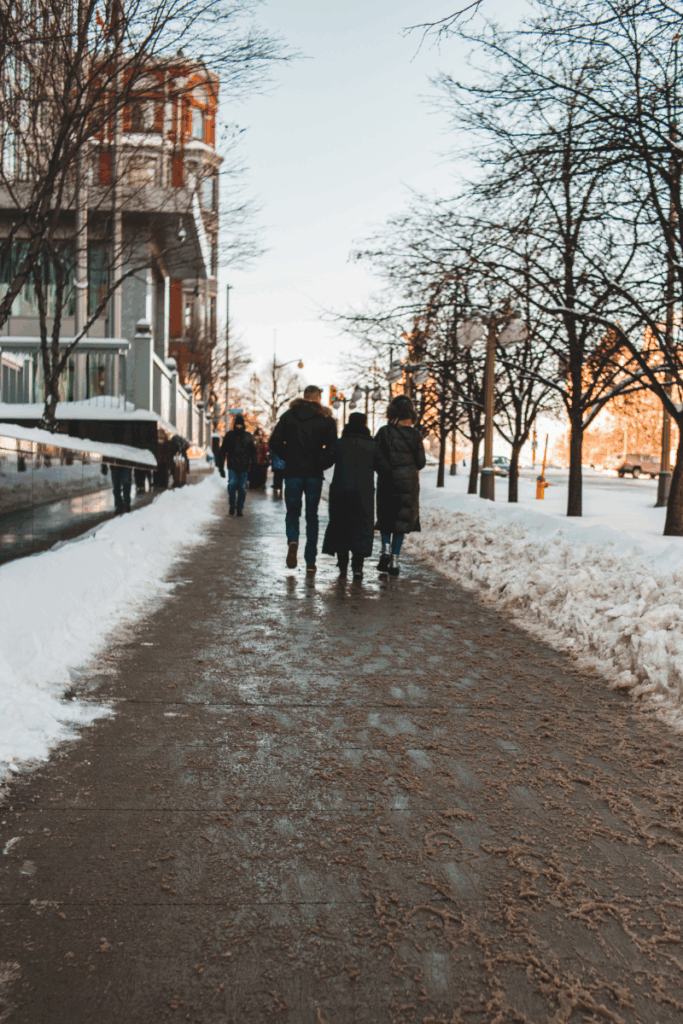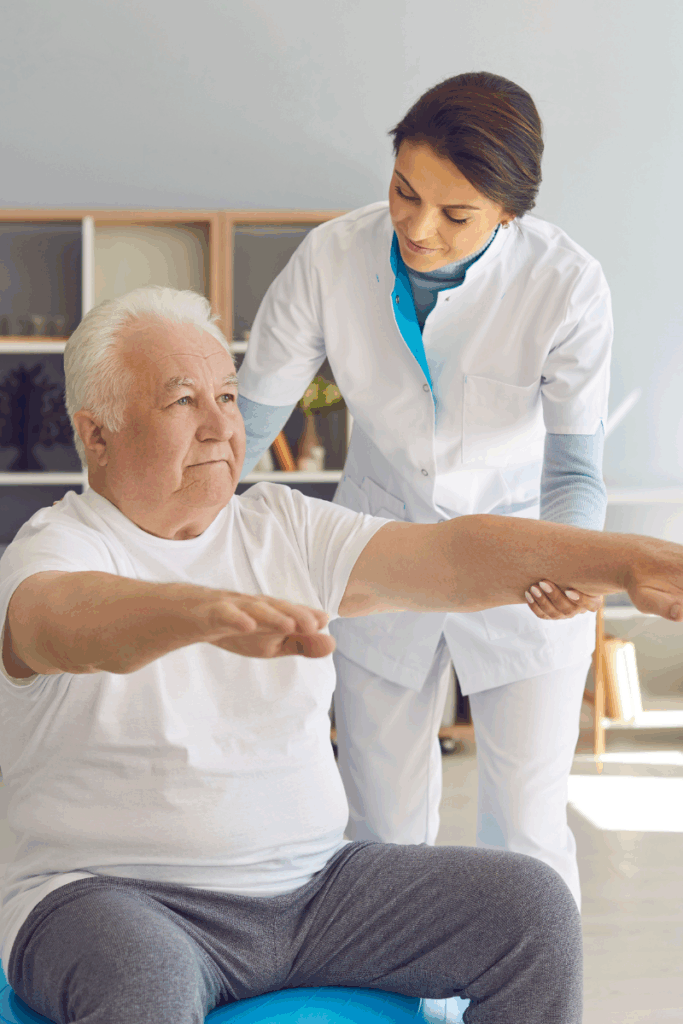The Most Common Fall Injuries We See (and How to Prevent Them This Winter
Posted by: Reform Physical Therapy in Injury Prevention, Physical Therapy Tips, Winter Safety on October 22, 2025


When winter arrives in Maine, so does the ice — and with it, an increase in slips, trips, and falls. Whether it’s a quick walk to the car or a stroll down your driveway, one small patch of black ice can cause big problems. Every year, we see patients who are surprised by how quickly a fall can happen — and how long recovery can take.
The good news? Many of these injuries are preventable. With the right awareness, a few daily habits, and some simple balance and strength exercises, you can stay upright, confident, and injury-free this season.
1. Wrist and Hand Injuries
When you fall, your first instinct is to reach out and catch yourself. It’s a natural reaction — but it’s also one of the main reasons we see wrist sprains, fractures, and hand injuries during the winter months. When the body’s weight lands on the small bones of the wrist, it can cause painful bruising, ligament damage, or even broken bones that take weeks to heal.
We often see these injuries in people who slipped while carrying groceries, shoveling snow, or walking their dog. Because the reflex to “brace your fall” is so fast, it’s hard to stop — but you can reduce your risk.
Prevention Tip:
- Keep your hands free when walking outdoors (avoid carrying too much or putting them in your pockets).
- Wear gloves so you can keep your arms ready for balance.
- Use handrails when available and take slow, steady steps.
- If you do fall, try to bend your elbows and roll slightly to the side instead of landing stiff-armed.
Even minor wrist injuries can affect daily tasks like typing, cooking, or dressing — so if pain or swelling doesn’t improve within a few days, it’s worth getting checked by a physical therapist.
2. Hip Fractures
Hip fractures are among the most serious injuries caused by winter falls, particularly in older adults. A single slip can lead to surgery, long hospital stays, and months of rehabilitation. Because hip bones become weaker with age (a condition called osteoporosis), even a small impact can cause a break.
Prevention Tip:
- Strengthen your leg muscles with balance-building exercises like standing on one leg, heel raises, or mini squats.
- Improve your home safety: add grab bars in bathrooms, keep walkways clear, and wear sturdy, non-slip shoes indoors.
- Stay active — movement keeps bones strong and reaction times sharp.
At Reform Physical Therapy, we often help patients regain strength, stability, and confidence after hip fractures. But we’d always rather help you prevent a fall than recover from one.


3. Shoulder and Elbow Injuries
Shoulder and elbow injuries happen when someone twists or reaches out awkwardly during a fall. The shoulder joint is complex — and when it absorbs sudden force, it’s prone to strains, dislocations, and rotator cuff injuries. Elbows, meanwhile, can take the brunt of the impact and bruise deeply or even fracture.
Prevention Tip:
- Work on your upper-body strength and flexibility. Gentle resistance band exercises and wall push-ups can improve muscle support.
- Keep your posture in check — a strong, upright stance improves balance and helps your arms move freely when you need them.
- Avoid rushing on icy surfaces; small, careful steps help maintain control.
If you experience limited motion or pain lifting your arm after a fall, physical therapy can help restore mobility and prevent stiffness from setting in.
4. Head Injuries
A head injury is one of the most serious consequences of a fall. Even a minor bump can lead to a concussion or lingering dizziness, especially in older adults. We often see patients who thought they were fine at first, only to notice headaches or blurred vision hours later.
Prevention Tip:
- Wear proper footwear with good traction.
- Make sure outdoor areas are well-lit and salted when icy.
- Walk like a penguin — take short, slow steps with your feet slightly turned out and your center of gravity low.
If you hit your head and experience confusion, nausea, or blurred vision, seek medical help right away. Physical therapists can later help with dizziness or balance issues that sometimes follow concussions.
5. Lower Back and Tailbone Pain
Landing flat on your back or tailbone can lead to painful bruises, muscle spasms, or even herniated discs. These injuries can linger long after the fall, especially if muscles tighten in response to pain.
Prevention Tip:
- Bend your knees and lower your center of gravity when walking on slick surfaces.
- Use ice grips or traction cleats on your boots for better stability.
- If you’ve fallen before, ask your physical therapist about balance retraining and fall prevention exercises.
Many patients find that regular movement, gentle stretching, and core-strengthening exercises reduce their risk of falling again — and help their backs feel stronger all year long.
When to See a Physical Therapist
Even if you feel “mostly fine” after a fall, it’s smart to get checked by a physical therapist. Pain and stiffness can build up over time, and untreated injuries can lead to lasting issues with balance or mobility.
At Reform Physical Therapy, we specialize in helping patients recover from falls, regain confidence, and move safely through every season. From personalized exercise plans to hands-on care, we’re here to help you stay active, strong, and fall-free this winter.
